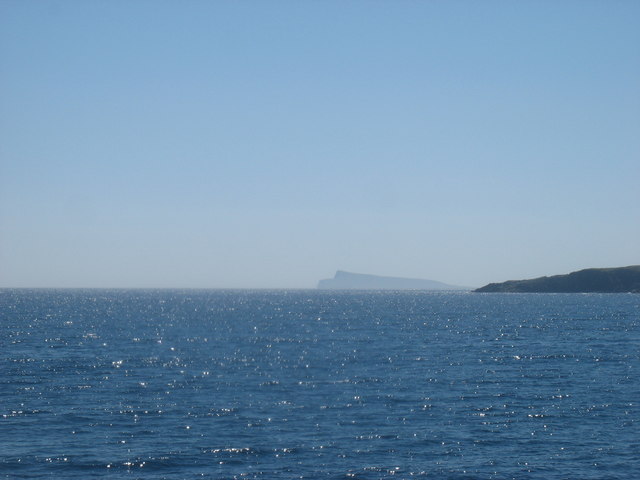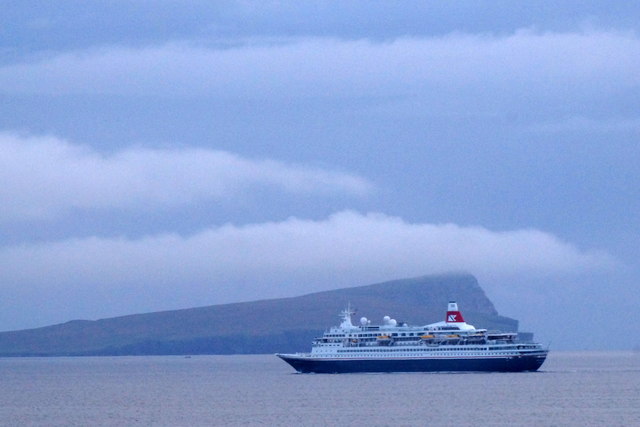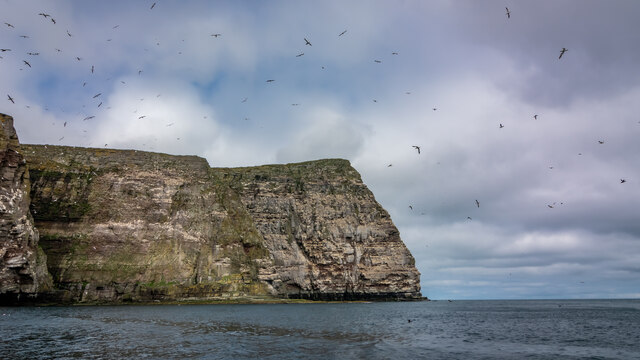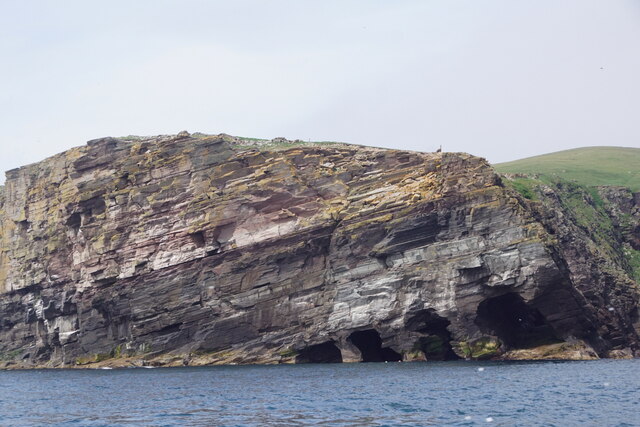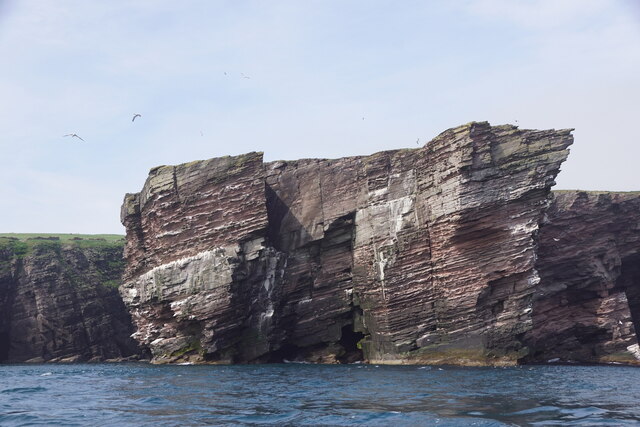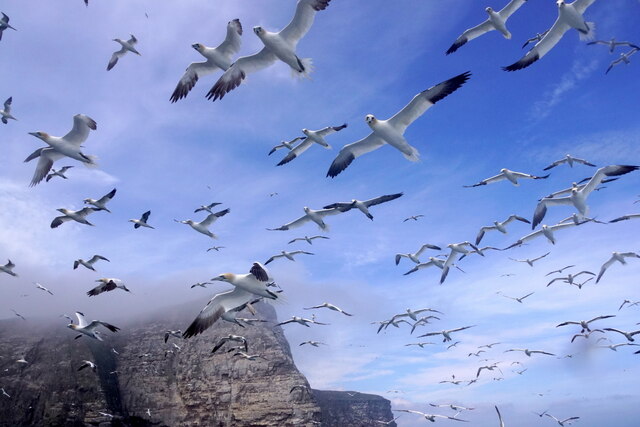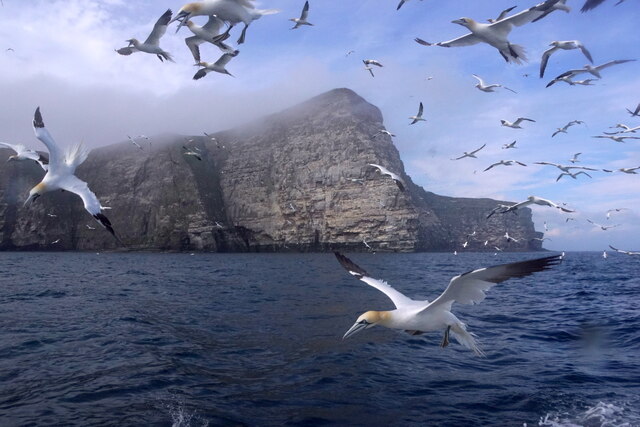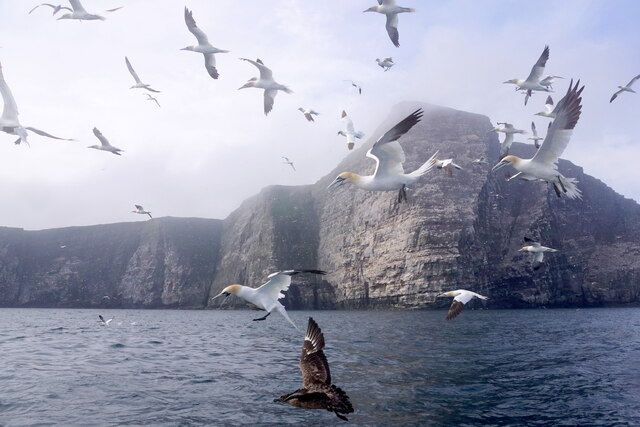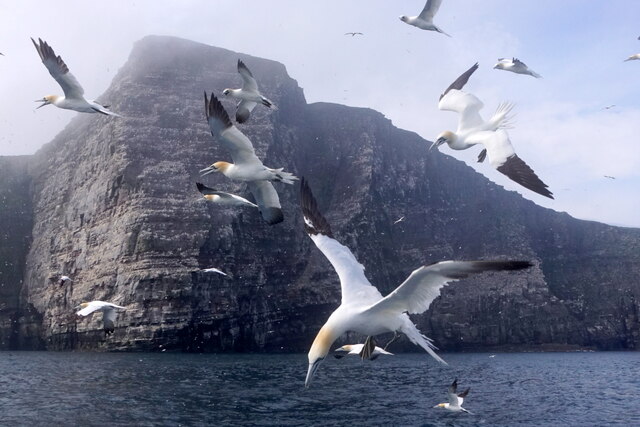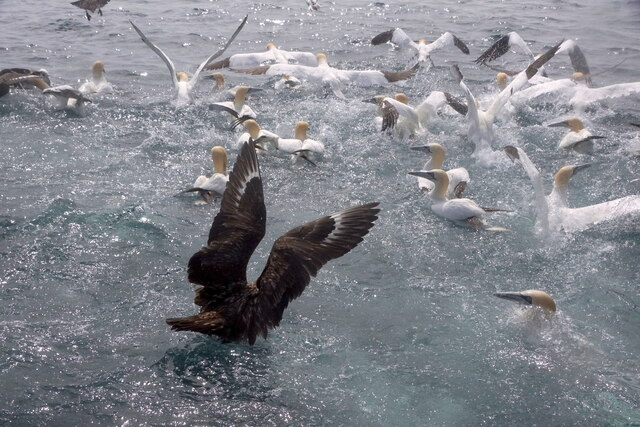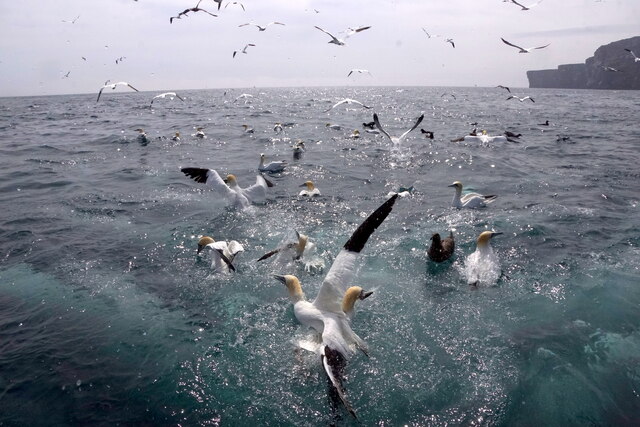The Cuddacks
Cliff, Slope in Shetland
Scotland
The Cuddacks
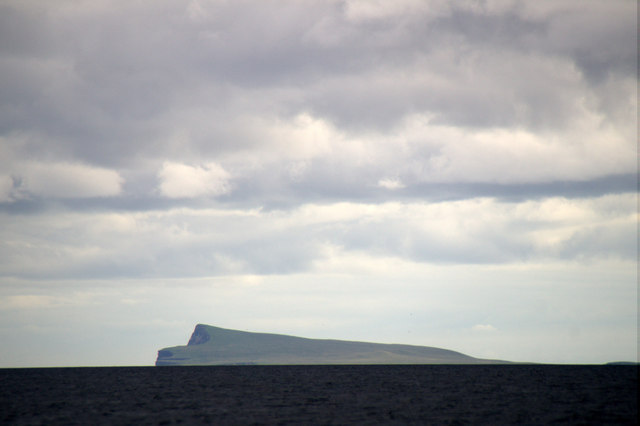
The Cuddacks are a series of cliffs and slopes located in Shetland, an archipelago situated off the north coast of mainland Scotland. These natural formations are renowned for their rugged beauty and provide breathtaking views of the surrounding landscape.
The cliffs of The Cuddacks are characterized by their steep and towering faces, formed from layers of sedimentary rock that have been shaped by centuries of erosion from the harsh North Atlantic Ocean. The rock formations are predominantly composed of sandstone and shale, which create a unique and striking color palette of reds, oranges, and browns.
The slopes of The Cuddacks offer a more gentle and gradual descent, providing a contrast to the dramatic cliffs. Covered in lush vegetation, including grasses, shrubs, and wildflowers, these slopes are home to various species of birds and small mammals.
The Cuddacks are a popular destination for outdoor enthusiasts and nature lovers, offering opportunities for hiking, birdwatching, and photography. Visitors can explore the cliffs and slopes through a network of well-maintained trails that wind their way along the coastline, providing stunning views of the surrounding sea and nearby islands.
Due to their exposed location, The Cuddacks are subject to strong winds and unpredictable weather conditions. It is important for visitors to come prepared with appropriate clothing and equipment to ensure a safe and enjoyable experience.
Overall, The Cuddacks in Shetland are a must-visit for those seeking to immerse themselves in the wild and untamed beauty of Scotland's coastal landscapes.
If you have any feedback on the listing, please let us know in the comments section below.
The Cuddacks Images
Images are sourced within 2km of 60.138631/-1.0078971 or Grid Reference HU5539. Thanks to Geograph Open Source API. All images are credited.
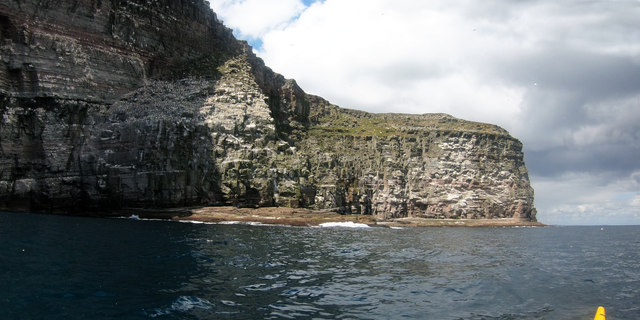
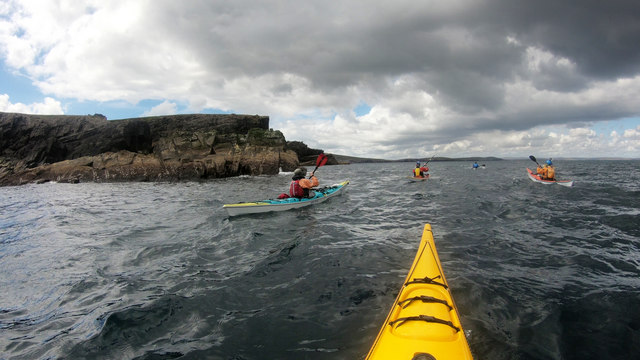
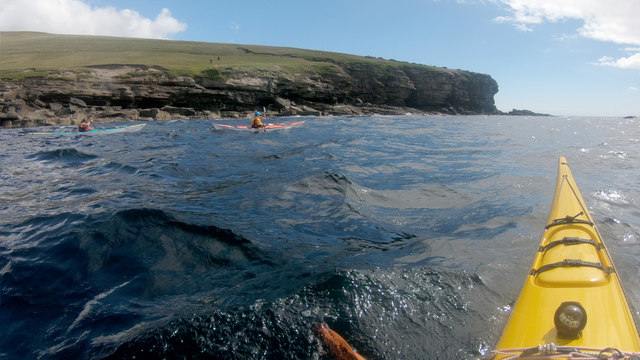
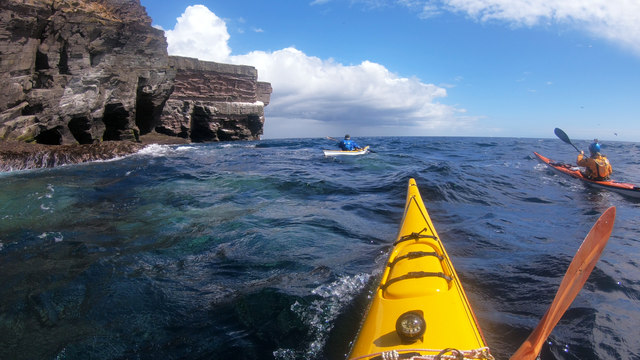

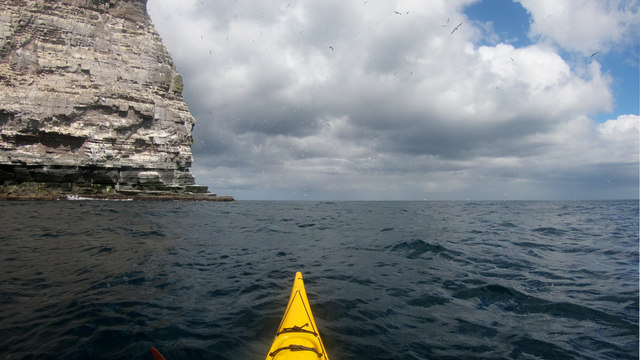
The Cuddacks is located at Grid Ref: HU5539 (Lat: 60.138631, Lng: -1.0078971)
Unitary Authority: Shetland Islands
Police Authority: Highlands and Islands
What 3 Words
///secure.incensed.tinsel. Near Lerwick, Shetland Islands
Nearby Locations
Related Wikis
Holm of Noss
The Holm of Noss or Cradle Holm is an uninhabited islet of the Shetland Islands. It is about 48m at its highest point. == Geography and geology == It is...
Isle of Noss
The Isle of Noss or Noss (Scots: Noss) is a small, previously inhabited island in Shetland, Scotland. Noss is separated from the island of Bressay by the...
Broch of Cullingsburgh
The Broch of Cullingsburgh is an Iron Age broch located in the Shetland islands. == Location == Located on Bressay, off the east coast of mainland Shetland...
Voe of Cullingsburgh
Voe of Cullingsburgh is a large sea loch off the Shetland island of Bressay, voe meaning "sea inlet" in Shetland dialect. The local spelling of the name...
Nearby Amenities
Located within 500m of 60.138631,-1.0078971Have you been to The Cuddacks?
Leave your review of The Cuddacks below (or comments, questions and feedback).
